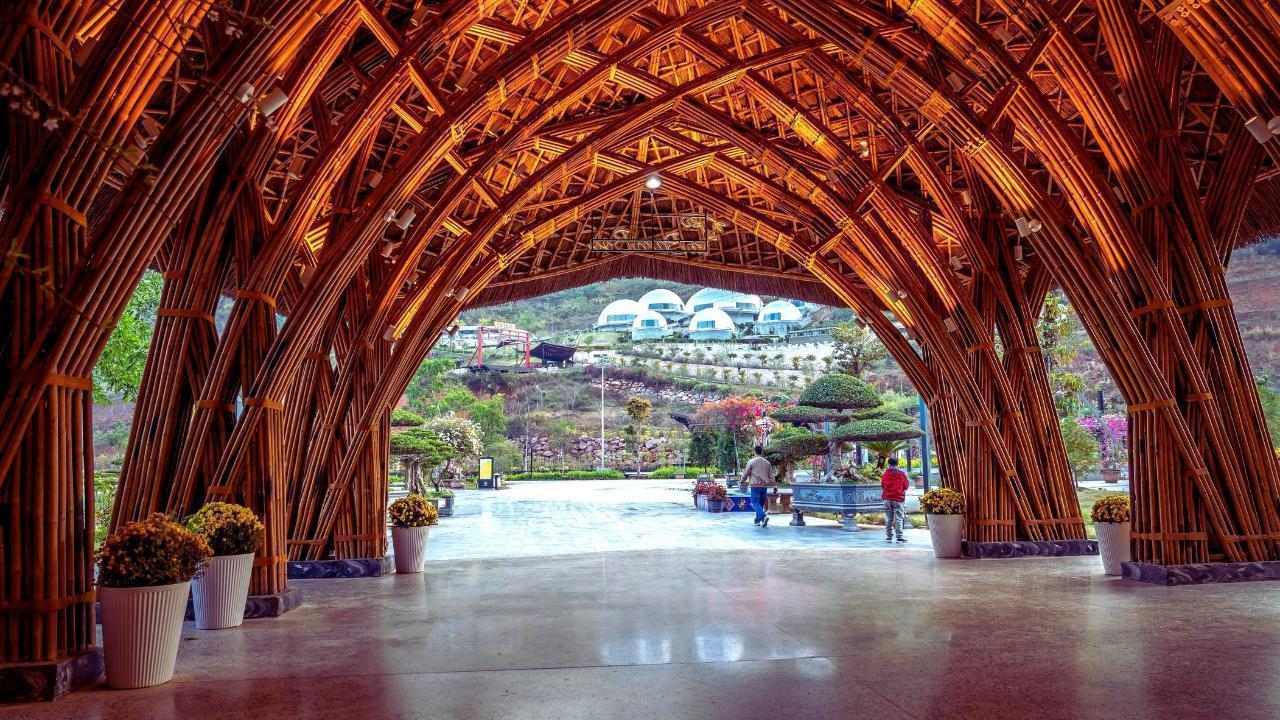You have not yet added any article to your bookmarks!

Join 10k+ people to get notified about new posts, news and tips.
Do not worry we don't spam!

Post by : Anis Farhan
For centuries, bamboo has been more than just a building material in Asia—it has been a symbol of resilience, adaptability, and harmony with nature. From rural huts to elaborate temples, its presence in Asian architecture is woven deep into the continent’s cultural heritage. Today, as environmental concerns drive the need for greener construction practices, bamboo is re-emerging—not merely as a nostalgic nod to the past, but as a modern architectural star, capable of rivaling steel and concrete in both strength and design versatility.
Modern architects across Asia are rediscovering bamboo’s potential, reimagining it for contemporary spaces that are not only beautiful but also sustainable. This revival marks a fascinating intersection where tradition meets technology, producing structures that are as innovative as they are eco-friendly.
Bamboo’s story in Asia is centuries old. In China, it has long been associated with integrity and resilience, often symbolizing scholarly virtue in classical paintings. In Japan, it appears in traditional tea houses and Shinto shrines, its straight and elegant form representing purity. In Indonesia and the Philippines, bamboo is a staple in rural homes, valued for its availability, flexibility, and ability to withstand tropical climates.
The cultural dimension of bamboo goes beyond aesthetics—it is a material intertwined with rituals, festivals, and everyday life. In Vietnam, bamboo bridges connect rural communities. In India’s northeast, bamboo craft traditions have been passed down through generations, supporting livelihoods and preserving indigenous knowledge.
While bamboo’s cultural value is undeniable, its rise in modern architecture is backed by impressive science. Technically a grass rather than a tree, bamboo grows rapidly—some species by over a meter per day—and reaches maturity in just three to five years. Its tensile strength can rival that of steel, and it’s remarkably lightweight, making it an ideal candidate for disaster-resistant structures.
Engineers have developed advanced treatment methods to prevent pests and rot, addressing bamboo’s historical vulnerability to decay. Laminated bamboo panels, compressed bamboo boards, and hybrid composites now allow architects to use bamboo in high-rise construction, flooring, furniture, and even structural beams capable of carrying heavy loads.
Countries across Asia are embracing bamboo in diverse and innovative ways:
Indonesia: The Green School in Bali, designed by Ibuku Architects, is perhaps the most famous modern bamboo structure in the world. Its sweeping organic curves and open-air classrooms show how bamboo can create inspiring, functional spaces without sacrificing durability.
Vietnam: Architect Vo Trong Nghia has pioneered the use of bamboo in public spaces, creating pavilions and cafés that merge seamlessly with nature. His designs often use untreated bamboo for a raw, earthy appeal.
China: The 2021 Yangshuo Bamboo Theater blends performance space with nature, using woven bamboo panels that filter light and create a dynamic façade.
Philippines: Bamboo domes are being used in community centers and typhoon-resistant housing projects, providing low-cost, sturdy solutions in disaster-prone areas.
Bamboo’s environmental advantages make it a frontrunner in Asia’s green building initiatives. Unlike hardwoods, which can take decades to mature, bamboo regenerates rapidly and requires no replanting after harvesting. Its deep root systems prevent soil erosion, and it absorbs significant amounts of carbon dioxide—up to four times more than some tree species.
Green certifications, like LEED and EDGE, increasingly recognize bamboo’s contribution to sustainable construction. Asian governments, particularly in countries like India, Thailand, and Vietnam, are encouraging bamboo use through subsidies and research grants, making it a central part of future urban planning.
Despite its promise, bamboo faces challenges on its path to mainstream adoption. Quality control remains a hurdle—natural variation in bamboo culms can make standardization difficult. In some countries, outdated perceptions persist, with bamboo still associated with temporary or low-income housing.
Moreover, transportation and processing facilities for treated bamboo are limited in certain regions, which increases costs and reduces accessibility. Overcoming these barriers requires collaboration between architects, governments, and local communities to build trust in bamboo as a high-end, durable material.
Bamboo’s versatility extends beyond architecture. In interior design, it is used for flooring, wall paneling, and furniture, creating warm and inviting spaces. Bamboo textiles are gaining popularity for their softness and antibacterial properties, while bamboo-based activated charcoal finds use in air and water purification systems.
In urban landscaping, bamboo acts as a natural noise and wind barrier. Its aesthetic appeal and sustainability credentials make it a go-to choice for eco-conscious hotels, resorts, and public parks across Asia.
With climate change accelerating and the demand for sustainable materials growing, bamboo’s role in modern architecture is set to expand. We can expect to see more hybrid designs combining bamboo with glass, steel, and concrete for urban environments. Advanced engineering may lead to bamboo skyscrapers, modular homes, and transportable bamboo-based shelters for disaster relief.
Younger generations of architects, especially in Asia, are rethinking design philosophies to embrace local materials and cultural heritage. Bamboo’s blend of beauty, strength, and eco-benefits makes it a compelling symbol of a future where innovation and tradition walk hand in hand.
The story of bamboo architecture in modern Asia is one of rediscovery. Once seen as an old-world necessity, it has evolved into a contemporary design statement and a beacon of sustainability. From the rice paddies of Vietnam to the urban skylines of Jakarta, bamboo’s journey reflects Asia’s ability to adapt, innovate, and honor its heritage while addressing the environmental challenges of our time.
Bamboo’s future in architecture isn’t just about building greener—it’s about building smarter, drawing on the wisdom of tradition to create spaces that nourish both people and the planet.
The information presented in this article is intended for general informational purposes and does not constitute professional architectural or engineering advice. Readers should consult with qualified professionals before undertaking any construction projects.










Two Telangana Women Die in California Road Accident, Families Seek Help
Two Telangana women pursuing Master's in the US died in a tragic California crash. Families urge gov

Ranveer Singh’s Dhurandhar Roars Past ₹1100 Cr Worldwide
Ranveer Singh’s Dhurandhar stays unstoppable in week four, crossing ₹1100 crore globally and overtak

Asian Stocks Surge as Dollar Dips, Silver Hits $80 Amid Rate Cut Hopes
Asian markets rally to six-week highs while silver breaks $80, driven by Federal Reserve rate cut ex

Balendra Shah Joins Rastriya Swatantra Party Ahead of Nepal Polls
Kathmandu Mayor Balendra Shah allies with Rastriya Swatantra Party, led by Rabi Lamichhane, to chall

Australia launches review of law enforcement after Bondi shooting
Australia begins an independent review of law enforcement actions and laws after the Bondi mass shoo

Akshaye Khanna exits Drishyam 3; Jaideep Ahlawat steps in fast
Producer confirms Jaideep Ahlawat replaces Akshaye Khanna in Drishyam 3 after actor’s sudden exit ov